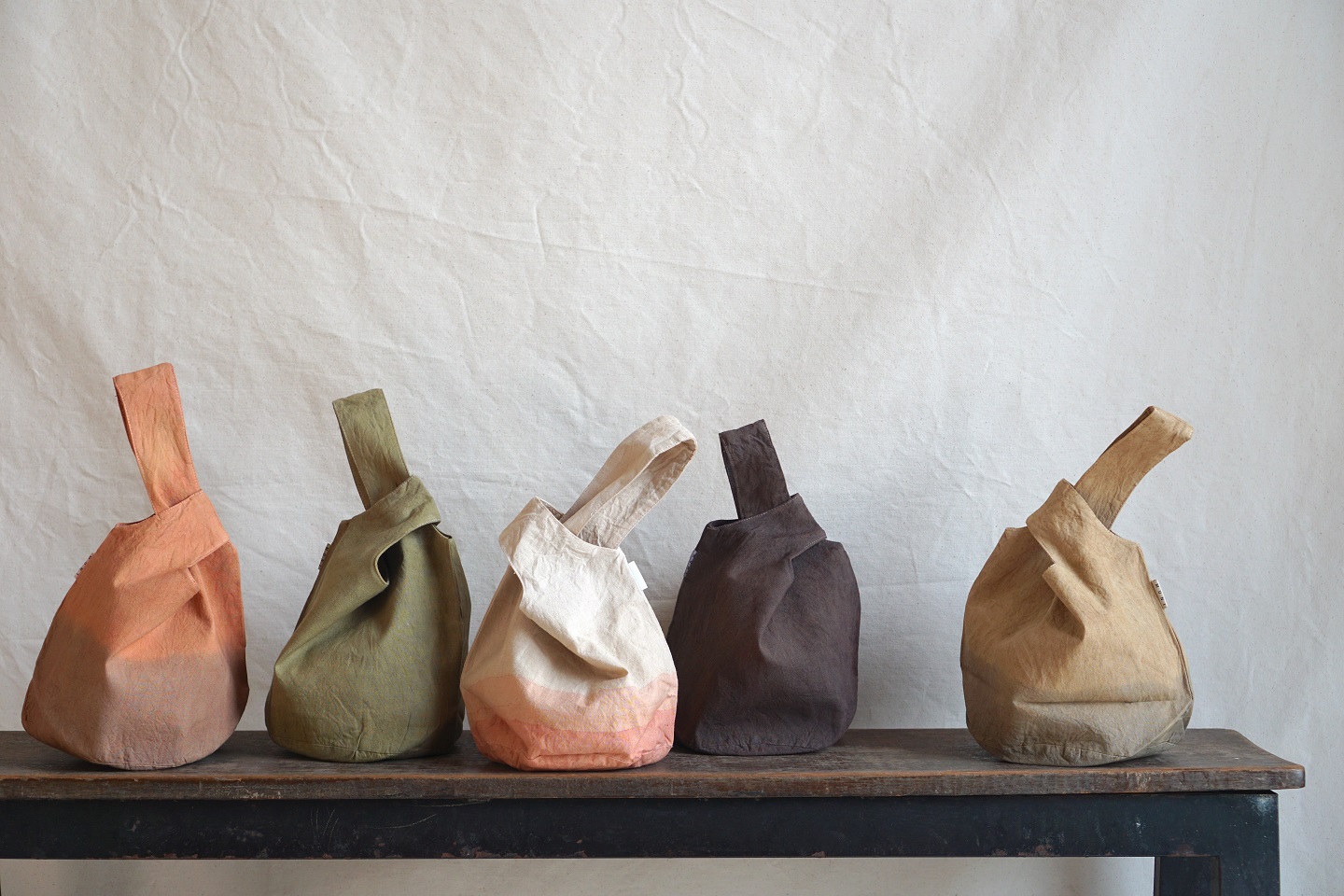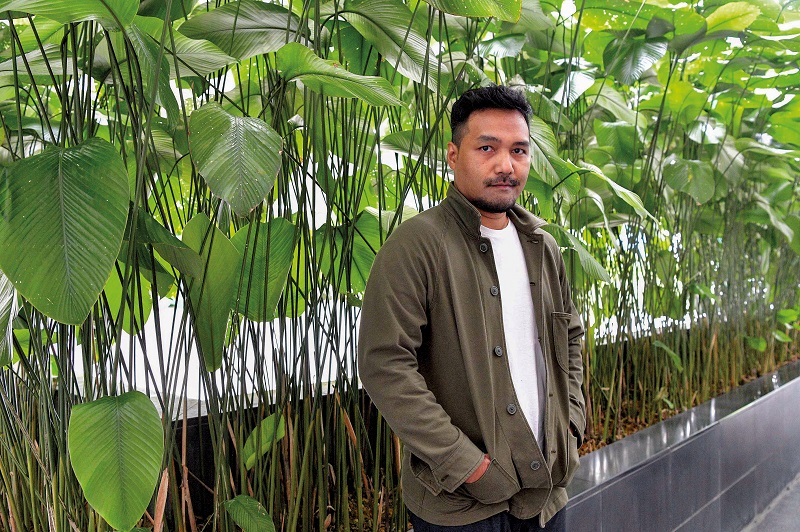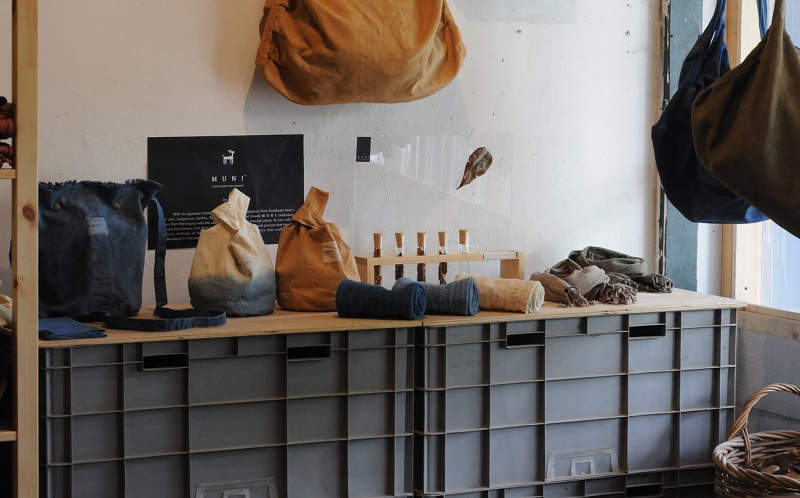
Muni's best-selling knot pouch (Photo: Muni)
Munir Osman was working as an interior designer in Ubud, Indonesia, when he discovered natural dye back in 2017. "I was designing for a client who was based in Bali. So I began doing some research and became interested in seeing the potential of natural dyes in Malaysia."
He was informed by the locals to learn more about colourants in Yogyakarta, which is famed for its textile production. There, the practice of using natural dyes in fabric was already quite established. "I went there to attend classes with one of the dye masters. I made several trips to the city just to improve my skills and gain more knowledge."
Upon returning, Munir did not start a business right away. "There's a lot of trial and error in developing colours, as well as finding my own style for the brand."
He experimented with different types of plants he could find around him such as daun ketapang, which he picked up at a beach about 30 minutes from his studio in Sepang, Selangor. Other ingredients he explored include rambutan and mangosteen peels, and daun lemuni (vitex trifolia leaves), which he got from his mother’s hometown in the north.
20230313_peo_munir_osman_sb_6.jpg

After one year of research and development, Munir established Muni, an eponymous brand that specialises in natural dye and celebrates nature through fashion.
Natural dye refers to colourants derived from plants and fruits. While you can possibly create dye from rocks, mud, clay and other elements, Munir focuses on tropical plants to come up with pigments for his products. He makes sure to find a use for every part of a plant, from its seeds, roots and bark to its fruits, skin and leaves.
How does he achieve the shades that he wants? The key is to start with the basics. "There are three primary colours: red, yellow and blue. For red, we use kayu sepang or madder root. Blue is sourced from true indigo, and yellow is either daun ketapang or kayu tegeran. These primary colours can be mixed to get other colours. It's just a matter of experimenting with the substance to see what you can get from it."
As Munir scaled up the business, he had to look for reliable suppliers that could provide materials in large quantities. "It's a bit difficult for us to get supplies in our country. I had to go back to Indonesia because they have what we need. About 80% of our ingredients are from Indonesia, some are from Rajasthan in India and the rest are from Malaysia."
The brand's current offerings include T-shirts, hoodies, aprons, tote bags, hobo bags and its best-selling knot pouch. "The items are designed by myself, inspired by things I see around me."
309179377_483933847081644_3284922464981475398_n.jpg

These pieces are made using a range of fabrics such as cotton, linen, silk, bamboo and rayon. "We get the raw fabrics and then sew them in our studio. The process sometimes involves dyeing the fabric before sewing. Or sewing it into a product and then dyeing it. Each of these processes creates different aesthetic for the product."
Extraction, dyeing and sewing are all done locally. With Muni, Munir hopes to honour and put the spotlight on the people involved in creating natural handmade items, whether they are farmers, tailors or artisans. Since setting off five years ago, he has hired three full-time workers to help him with production.
"When the brand started getting attention from more people, I knew it was time to move on from being an artisan to an entrepreneur. That meant I had to train others so I could balance responsibilities like managing the business and coming up with creative ideas."
What has changed for Muni since 2017? "It’s the acceptance of what we do. In the beginning, it was difficult because it was a niche market that most people did not really understand — conversations about the environment were not as big at that time.
"We notice the younger generation is more interested in natural dyes and sustainability. And we can definitely see people making the shift from fast fashion to slow fashion."
For the past few years, the brand has been producing an annual collection. Its vision now is to come up with more items in a year. "Previously, we decided on a collection as we went. Now, I want the business to be more organised in terms of production planning so we can plan ahead. We will hopefully release three small collections throughout the year." The current batch, called Tuai (Malay for "harvest"), runs until April, and offers products in vibrant colours.
The brand has a store at Malaysia Grand Bazaar in Bukit Bintang, Kuala Lumpur, and some offerings can be found at Unplug in Bangsar Village II, KL. Expanding its presence overseas — in Singapore, Bali, Australia and the US — is in the pipeline.
Munir wishes for Muni to be the medium that keeps the conversation going about the importance of preserving the environment, as well as a place where artisans are recognised for their skilled work in the handicraft sector.
This article first appeared on Mar 20, 2023 in The Edge Malaysia.


